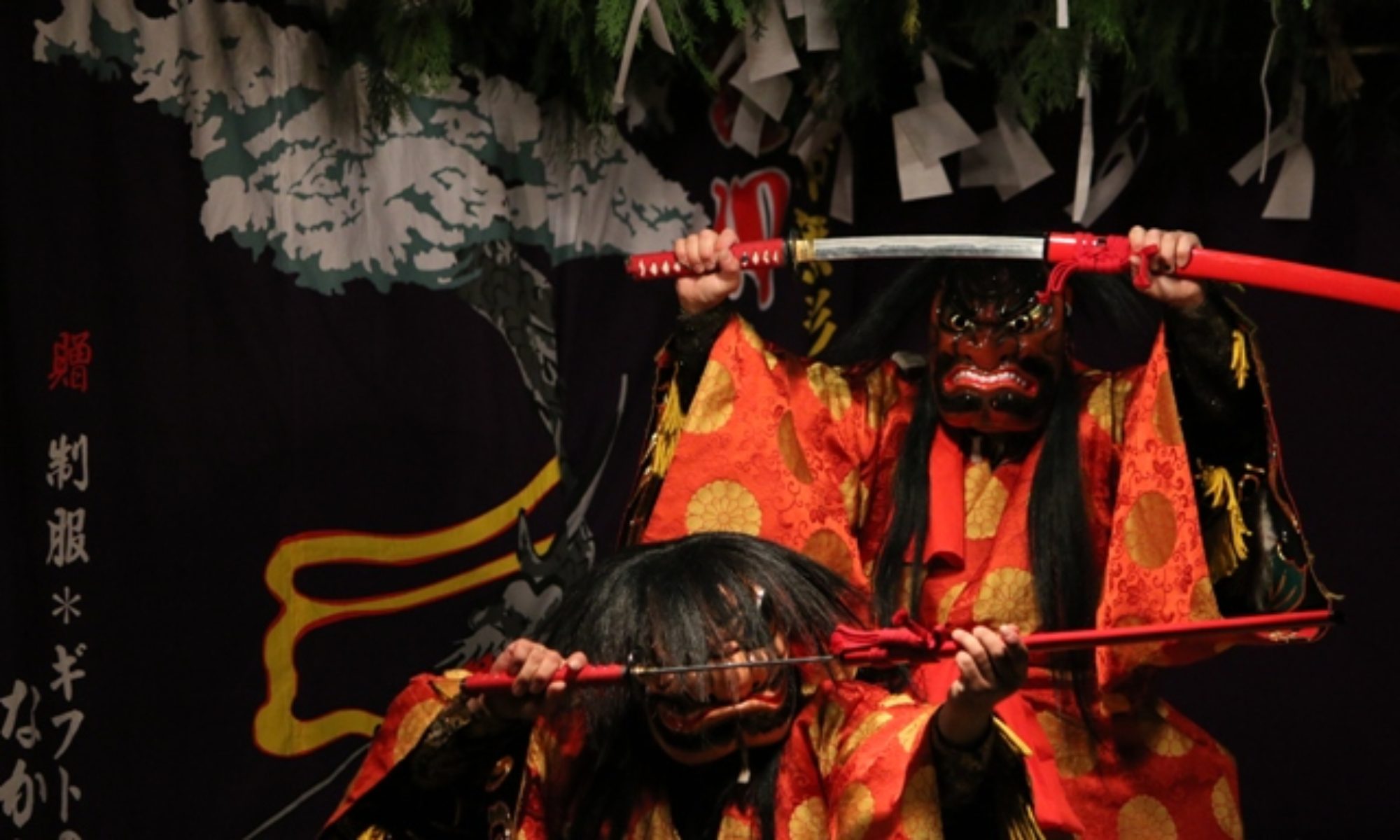石見神楽
Iwami Kagura
Kagura is a Shinto theatrical dance and music dedicated to the deities of Japanese mythology and it is considered to haves a longer history than Nou and Kabuki.The origins of kagura are Shinto rituals and sacred dance and music performed by priestesses or priests in the Imperial Court as well as in villages all around the country.The word kagura derives from a world “神座”(Kamikura) which means “where deities dwell”,however it has changed over time to “神楽”(Kagura) which means “entertaining deities “.
Iwami Kagura is a form of Kagura native to the area around the Iwami region, in the western Shimane Prefecture. The original form is considered to have been established in the 16th century, and it was originally performed by Shinto priests at shrines during the annual celebrations to dedicate the kagura to the deities in gratitude and to pray for an abundant harvest and safety throughout the year. In the 19th century, it was handed down to village people, and since then it has evolved around the theatrical and entertainment aspects. There are more than 30 plays currently being performed, and the repertoire includes ritual dances and narrative plays. Today the kagura is also performed in theaters, special events and festivals.
Among the many different froms of kagura all over Japan, Iwami Kagura is characterized by dynamic dance, fast beat music, and flamboyant costumes. The masks are made of many layers of Sekishu Japanese washi paper, a UNESCO Intangible Cultural Heritage, and the elaborate costumes are handcrafted and embroidered with vast amounts of gold and silver thread. With all of these aspects, Iwami Kagura has captivated not only the locals but also people from other regions and countries.
